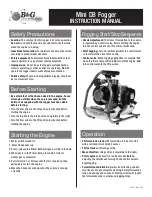
5
6. Degenerative arthritis involving only the femoral head in which the acetabulum does not
require replacement.
7. Pathology involving only the femoral head/neck and/or proximal femur that can be
adequately treated by hemi-hip arthroplasty.
Total or hemi-hip arthroplasty may be considered for younger patients if, in the opinion of the
surgeon, an unequivocal indication for total or hemi-hip replacement outweighs the risks
associated with the age of the patient and if limited demands regarding activity and hip joint
loading can be assured (see WARNINGS AND PRECAUTIONS section). This includes severely
crippled patients with multiple joint involvement for whom a gain in hip mobility may lead to an
expectation of significant improvement in the quality of their lives.
Modular Femoral Heads and Acetabular Components
A DePuy metal or ceramic modular femoral head is to be used with the DePuy femoral stem
component. The acetabulum is to be replaced with a DePuy 2 piece metal-backed UHMWPE or
all UHMWPE acetabular cup component with an inside diameter corresponding to the outside
diameter of the modular femoral head that is utilized.
Use only DePuy modular femoral heads with DePuy femoral stems. The taper size of the femoral
head MUST be matched to the taper size of the femoral stem.
CONTRAINDICATIONS
The following conditions are contraindications for total or hemi-hip replacement:
1. Active local or systemic infection.
2. Loss of musculature, neuromuscular compromise or vascular deficiency in the affected limb
rendering the procedure unjustified.
3. Poor bone quality, such as osteoporosis, where, in the surgeon's opinion, there could be
considerable migration of the prosthesis or a significant chance of fracture of the femoral
shaft and/or the lack of adequate bone to support the implant(s).
4. Charcot's or Paget's disease.
5. For hemi-hip arthroplasty, any pathological condition of the acetabulum, such as distorted
acetabuli with irregularities, protrusio acetabuli (arthrokatadysis), or migrating acetabuli, that
would preclude the use of the natural acetabulum as an appropriate articular surface for the
hemi-hip prosthesis.
6. Ceramic heads without inner titanium sleeves are contraindicated in revision surgery when
the femoral stem is well fixed and is not being replaced.
NOTE: Diabetes, at present, has not been established as a contraindication. However, because of
the increased risk for complications such as infection, slow wound healing, etc., the physician
should carefully consider the advisability of hip replacement in the severely diabetic patient.
WARNINGS AND PRECAUTIONS
CAUTION:
• Implants and trials components from different manufacturers or implant systems should
never be used together.
• Hip prosthesis components should never be reimplanted. Even though the implant appears
undamaged, the implant may have developed microscopic imperfections which could lead to
failure.
Summary of Contents for ACTIS DUOFIX
Page 2: ...2 ACTIS DUOFIX HIP PROSTHESIS ...
Page 109: ...109 ...
Page 110: ...110 ...
Page 111: ...111 ...






































